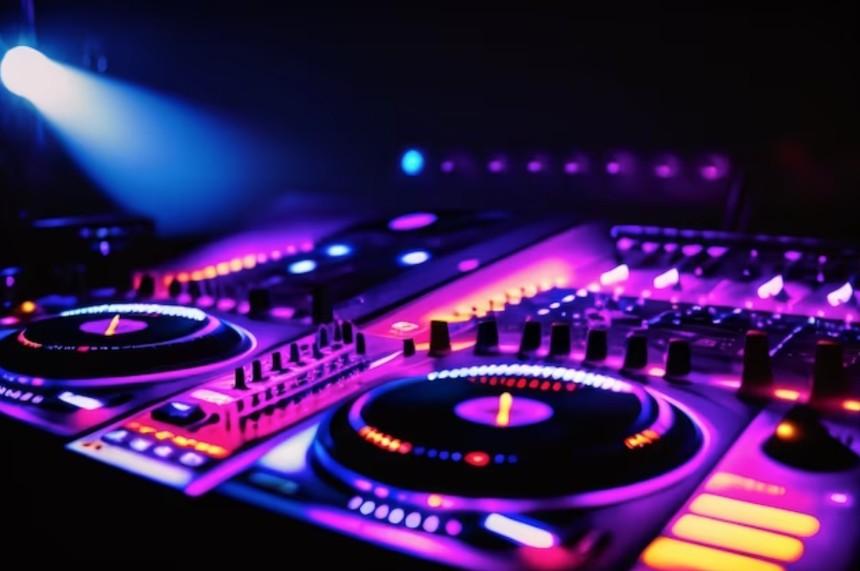Powered (PA) subwoofers are the unsung heroes of the audio world, delivering unparalleled depth and richness to your auditory experience. By producing robust bass frequencies often missed by standard loudspeakers, they ensure that your audience feels every beat, every pulse. While DJs swear by them for creating an immersive dance environment, they’re also indispensable in live sound settings, ensuring every musical nuance is felt. As the demand for high-quality sound intensifies, selecting the right subwoofer becomes paramount. Dive deep into this guide as we uncover the top PA subwoofers making waves in the industry today.
Best PA Subwoofers: Editor’s Choice
In any DJ setup, while the audio gear and computer are essential components, the speakers, particularly speakers for DJing, serve as the voice of the performance. Their significance can’t be overstated, especially when delivering bass-rich music. Many PA speakers struggle to produce deep bass tones without compromising mid and high frequencies.
Enter the subwoofer: a game-changer in enhancing bass output without distorting other sound elements. Two primary subwoofer types dominate today’s market—powered and passive. Powered subwoofers, equipped with built-in amplifiers, offer DJs an immediate, hassle-free boost in sound quality. In contrast, passive ones lack this internal amplification. The choice between them depends on a DJ’s specific needs and preferences. Below, check out our selection of the top 7 PA subwoofers.
Yamaha DXS15XLF

| Power | 1600W |
| Driver Size | 15″ |
| Frequency Response | 33Hz-150hz (-10 dB) |
| Max SPL | 136 dB |
| Inputs | 2 x XLR-1/4″ combo |
| Outputs | 2 x XLR |
| Dimensions (W/H/D) | 17.7″ – 23.1″ – 23.6″ (450mm – 587mm – 600mm) |
| Weight | 88.2 lbs. (40 kg) |
Pros
- Powerful Sound: With a 1600W Class-D amplifier, this subwoofer provides a robust, punchy, low-end sound perfect for DJ sets that demand deep bass.
- Extended Low-Frequency Response: Yamaha boasts a frequency response down to 33Hz, ensuring it captures even the lowest notes in your mix.
- Durable Construction: Built with a rugged wood enclosure and a durable finish, it is designed to withstand the wear and tear of regular gigging.
- Advanced DSP Protection: The onboard DSP ensures protection from potential damage due to long playtimes or sudden volume spikes.
- Cardioid Mode: Unique to the DXS series, this mode allows DJs to focus the bass towards the audience and reduce the bass that goes backstage, leading to a cleaner stage sound.
- Compact Size: Given its power, the DXS15XLF has a relatively compact design, making it easier to transport than other DJ subs in its class.
- Multiple Connectivity Options: With both XLR and TRS inputs, it provides versatility for different setups.
Cons
- Weight: Weighing around 88.2 lbs (40 kg), it might be challenging for a single individual to move around, especially without any built-in wheels.
- Price Point: Higher than some of its competitors, which might deter budget-conscious DJs or newbies in the field.
- Lack of Built-in Crossover: DJs might need to invest in an external crossover for optimizing sound between tops and subs.
- Cooling Fan Noise: Some users have noted that the built-in cooling fan can become audible in quieter environments.
- Visual Aesthetics: Its look is more functional than flashy, which might not appeal to DJs who want their equipment to make a visual statement.
The Yamaha DXS15XLF has established itself as one of the best powered subwoofers for DJ enthusiasts and professionals alike, setting a high benchmark in the audio equipment landscape. For those insistent on diving deep into the realms of low frequencies, this powerhouse offers an unparalleled experience. Its bass output not only delivers a thunderous punch but does so while maintains a harmonious balance throughout the sound spectrum.
Moreover, the resilience of this subwoofer build is something to behold. Touring artists and on-the-move DJs will mainly find solace in its industrial-strength construction, ensuring that this beast stands the test of time, rigorous setups, and frequent transport. Though it may not win any design awards, aesthetics becomes a secondary concern when you experience the raw power and smooth delivery that the DXS15XLF subwoofer brings to the table. Simply put, for those seeking the best powered subwoofer for DJ gigs and setups, this Yamaha model makes a compelling case.
JBL EON718S
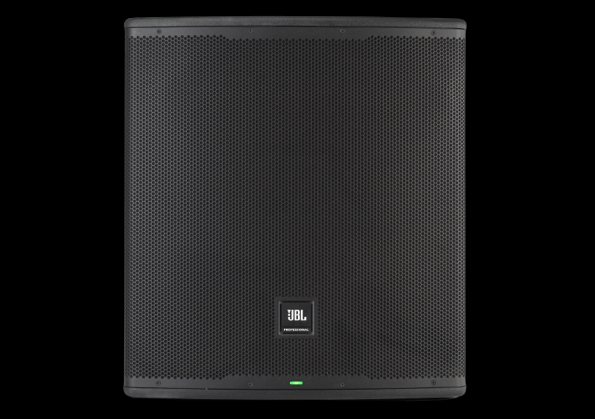
| Power | 1500W |
| Driver Size | 18″ |
| Frequency Response | 31Hz-150hz (-10 dB) |
| Max SPL | 131 dB |
| Inputs | 2 x XLR-1/4″ combo |
| Outputs | 2 x XLR |
| Dimensions (W/H/D) | 23.97″ – 26.25″ – 25.07″ (609mm – 667mm – 637mm) |
| Weight | 81.5 lbs. (37 kg) |
Pros
- Robust Power: With an 18-inch woofer and a built-in amplifier, it delivers a potent, thumping bass.
- Lightweight Design: Compared to other subwoofers in its class, the EON718S is relatively light, making transportation easier.
- Durable Build: The cabinet’s sturdiness and solid construction equip it to handle regular gigs and transportation.
- Integrated Bluetooth: Allows remote system control using JBL’s EON Connect app.
- Flexible Connectivity: Featuring an array of input and output choices, this unit adapts to diverse configurations.
- Extended Frequency Response: Provides a deep low-end reach, ensuring that all bass tones are captured.
Cons
- Price Point: On the higher end compared to other subwoofers in its class.
- Limited EQ Options: While it has built-in DSP presets, some users might want more in-depth EQ control.
- Bluetooth Range: The range might be limited in specific environments or with obstacles between the speaker and the connected device.
- No Built-in Wheels: While relatively lightweight, the absence of built-in wheels might make transportation slightly more challenging.
The JBL EON718S stands out as a contender in the realm of the best DJ powered subwoofers, particularly for those who prioritize accuracy and precision. Boasting a precise bass response that resonates down to 31Hz, it delivers crystal-clear low frequencies. However, while its power is commendable, it may not be the top choice for those seeking ground-shaking, thunderous bass output.
Its strong suit lies in its unparalleled build quality, setting several notches above rudimentary subwoofers. Moreover, its modern features accentuate its stature in the competitive audio market. It’s evident that the JBL EON718S is not just any regular subwoofer but a product of meticulous engineering. For enthusiasts who value clarity over sheer power and lean more towards sound finesse rather than just volume, the JBL EON718S emerges as a premium choice.
Pioneer XPRS1182S

| Power | 4000W |
| Driver Size | 18″ |
| Frequency Response | 40Hz-120Hz (-6dB) |
| Max SPL | 130 dB |
| Inputs | 2 x XLR-1/4″ combo |
| Outputs | 2 x XLR |
| Dimensions (W/H/D) | 26.02″ – 21.06″ – 21.12″ (661mm – 535mm – 536mm) |
| Weight | 71.2 lbs. (32.3 kg) |
Pros
- Powerful Low-End Response: The XPRS1182S delivers a resonant bass output, ensuring music vibrancy.
- Efficient Cooling System: Advanced airflow technology ensures the unit remains cool, promoting longevity.
- Robust Build Quality: Crafted from premium materials, this subwoofer withstands rigorous use and handling.
- Flexible Connectivity: Offers multiple input and output options, accommodating various audio setups.
- Auto-Return Speaker Protection: Minimizes the risk of damage from input overloads by reducing excessive input.
- Compact Footprint: Despite its power, the design remains relatively space-efficient.
- Easy Integration: Seamlessly pairs with other Pioneer speakers, allowing a more cohesive sound system setup.
Cons
- Weight Considerations: Though compact, its weight might be challenging in frequent mobility scenarios.
- Price Point: Positioned at a premium range, making it an investment decision.
- Learning Curve: Some users might need time to get acquainted with all its features.
- External Controls Dependency: Some essential controls require external devices or software.
Pioneer DJ, a stalwart in the DJ gear industry (namely infamous DJ controllers), has historically faced challenges when navigating the PA system domain. However, with the recent unveiling of their XPRS series, encompassing both tops and subs, it seems the tables are turning. This lineup not only positions Pioneer DJ as a competitive player in the PA arena but also as a testament to their commitment to versatility and excellence.
Though the series might not dazzle with excessive features, it undeniably delivers steadfast performance. It boasts of a compelling combination: a potent bass that pulsates with energy and a pristine, distortion-free audio output. Particularly noteworthy is the largest model in this series, which has earned its stripes as the best 18-inch powered subwoofer for DJ applications. Beyond just being a top-tier PA subwoofer, it embodies the synthesis of Pioneer DJ’s craftsmanship and innovation, making it a premier choice for audiophiles and professionals alike.
QSC KS118
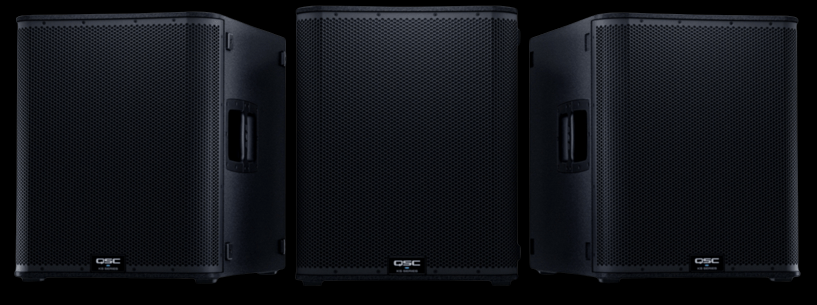
| Power | 3600W |
| Driver Size | 18″ |
| Frequency Response | 41Hz-98Hz (-6 dB) |
| Max SPL | 136 dB |
| Inputs | 2 x XLR-1/4″ combo |
| Outputs | 2 x XLR |
| Dimensions (W/H/D) | 104 lbs. (47.2 kg) |
| Weight | 20.5″ – 25.2″ – 30.9″ (521mm – 640mm – 785mm) |
Pros
- Deep Bass Response: With a frequency range extending down to 35Hz, it ensures the capture of even the deepest bass notes in the mix.
- Robust Build: With a rugged exterior, this unit stands resilient against the challenges of frequent gigging and tours.
- Cardioid Mode: This functionality emphasizes bass projection toward the audience while diminishing rear-firing bass, offering advantages in specific configurations.
- Portability: Equipped with low-noise casters, it’s easier to move, making setup and transportation more convenient.
- Onboard DSP: Integrated Digital Signal Processing guarantees peak performance while safeguarding the subwoofer.
- Flexible Connectivity: Comes with versatile input and output options, catering to various setup requirements.
Cons
- Weight: At approximately 104 pounds, solo transportation can pose challenges, even considering its casters.
- Price Point: As a premium subwoofer, the KS118 might be on the pricier side when compared to some competitors in its range.
- Size: Its expansive dimensions might not fit seamlessly into smaller venues or tight configurations.
- Cooling Fan Noise: In more hushed environments, the cooling fan’s sound might become noticeable, potentially causing reservations among some users.
The QSC KS118 emerges as a frontrunner when pondering what makes it one of the best subwoofers for DJ enthusiasts and professionals alike. Its powerful and expansive bass response captivates listeners, satisfying even those with the most discerning bass palates. What’s particularly commendable is its ability to deliver this intensity with impeccable clarity; its sound remains sharp and distinct, devoid of any murky undertones.
Furthermore, its allure isn’t just sonic. The KS118 boasts an array of features, from intricate tuning options that cater to diverse acoustic needs to its stalwart build meant to endure the rigors of consistent use. Its contemporary design is the cherry atop this already sumptuous audio cake. While investing in this subwoofer might require a bit of a financial stretch, the returns in auditory excellence are undeniable. For enthusiasts with a penchant for profound bass, the QSC KS118 undoubtedly merits prime consideration.
Bose F1
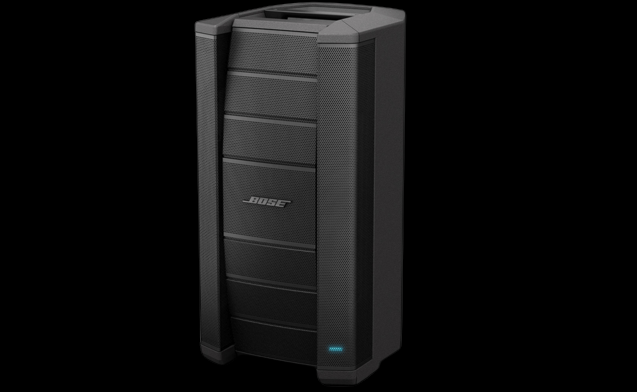
| Power | 1000W |
| Driver Size | 2 x 10″ |
| Frequency Response | 38Hz-250Hz (-10dB) |
| Max SPL | 130 dB |
| Inputs | 2 x XLR/TRS Combo |
| Outputs | 2 x XLR |
| Dimensions (W/H/D) | 16.1″ – 27″ – 17.6″ (409mm – 686mm – 447mm) |
| Weight | 55 lbs. (25 kg) |
Pros
- Flexible Array System: Users can shape the coverage pattern to best suit their audience setup, optimizing sound delivery.
- Compact and Portable: Even with its potent output, the Bose F1 boasts a design that simplifies transportation, fitting seamlessly into mobile gigs and configurations.
- Integrated Amplifier: Comes with a 1000W amplifier, ensuring clarity and power in sound projection.
- Dual Subwoofer Option: It can be paired with two F1 subwoofers, adding depth to the bass response when needed.
- Sleek Design: The modern and stylish look complements most setups and is visually pleasing.
- Intuitive Controls: A User-friendly interface allows quick adjustments, even amid a performance.
- Reputable Brand: Bose is renowned for its commitment to sound quality and durability, assuring product reliability.
Cons
- Price Point: Falling in the premium category, the Bose F1 might not be the most budget-friendly option available.
- Weight: Though compact, the Bose F1 is relatively heavy, which can challenge solo transportation.
- Limited Built-in EQ: Some users might desire more in-depth EQ controls and customization options.
- Proprietary Connections: Some parts of the Bose system use specific connectors, limiting flexibility in some setups.
- External Power Requirement: The system doesn’t have an internal battery option, making it less suitable for locations without easy access to power outlets.
The Bose F1 reigns as a premier choice among subwoofers for DJ enthusiasts, especially those already acquainted with the F1 Model 812. When envisioning a holistic speaker system, this subwoofer embodies clarity, aesthetic appeal, and dynamic sound performance. Its sleekness isn’t just in design but also in functionality—thanks to its lightweight nature and compact dimensions, it becomes an invaluable asset to solo performers.
One cannot gloss over its meticulous construction quality, which echoes Bose’s commitment to longevity and optimal sonic output. The subwoofer is thoughtfully crafted, brimming with protective features and versatile options, ensuring its resilience and peak performance across countless gigs. While some might pause at its price point, given its size, there’s no denying the unparalleled quality it offers. Indeed, for aficionados inclined towards Bose’s signature sound and product excellence, this subwoofer emerges as a compelling piece to augment their audio arsenal.
Turbosound IQ15B
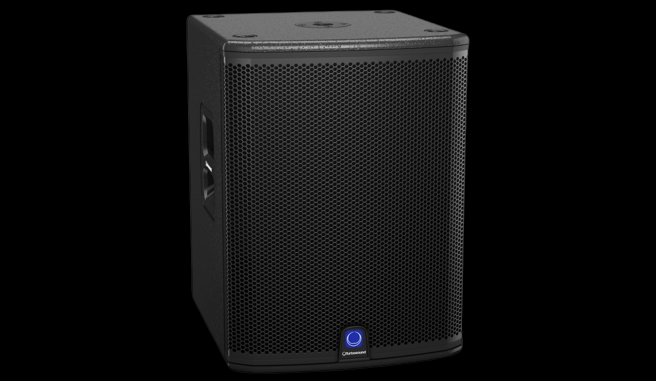
| Power | 3000W |
| Driver Size | 15″ |
| Frequency Response | 40Hz-130Hz (-10dB) |
| Max SPL | 131 dB |
| Inputs | 2 x XLR-1/4″ combo |
| Outputs | 2 x XLR |
| Dimensions (W/H/D) | 17.5″ – 23.5″ – 19.5″ (446mm – 597mm – 495mm) |
| Weight | 69.3 lbs. (31.4 kg) |
Pros
- Powerful Amplifier: Boasting a 3000W Class-D amplifier, this unit promises potent and crisp bass performance, adapting to various venue needs.
- DSP Integration: Advanced sound shaping thrives through its integrated DSP, enhancing performance across diverse audio configurations.
- LCD Interface: An intuitive LCD screen simplifies precise adjustments and system configurations.
- ULTRANET Connectivity: Enables digital audio integration with ULTRANET-compatible counterparts.
- Compact Design: Despite its potency, this unit offers space efficiency, especially in tight quarters.
- Durable Build: Touring and frequent use meet their match with its reinforced structure, ensuring longevity.
- Deep Bass Response: Its 15-inch high-excursion woofer delivers bass depths that resonate with different musical styles.
Cons
- Portability Challenges: Given its robust components, single-handedly moving the IQ15B might be a task.
- Fan Noise: In quiet or intimate venues, the cooling fan’s operational sound might be noticeable.
- Price Considerations: A blend of sophisticated features and brand reputation positions it at a higher price point, which could be daunting to those with tight budgets.
- Beginner Hurdles: Its expansive feature set might overwhelm newcomers to intricate sound systems, requiring some orientation time.
Turbosound stands tall as a revered name in the landscape of loudspeakers and their complementary subwoofers. Specifically, the IQ15B emerges as a stellar initiation into the world of powered PA subwoofers, particularly tailored to cater to more intimate settings. This subwoofer doesn’t merely produce bass; it crafts it with an unmistakable clarity and punch. While it may not rumble the earth beneath your feet like some of its counterparts, its performance is nonetheless commendable.
One of the captivating facets of the IQ15B is its ruggedly built cabinet, designed to endure the tests of time and usage. Coupled with its extensive connectivity features and sophisticated Digital Signal Processing (DSP), it becomes a beacon of value. Such attributes are seldom encountered in subwoofers at their price range. Although it might not be the first choice to fill cavernous venues with thumping bass, the IQ15B unquestionably stands its ground as a leading PA subwoofer in the market.
Mackie Thump118S
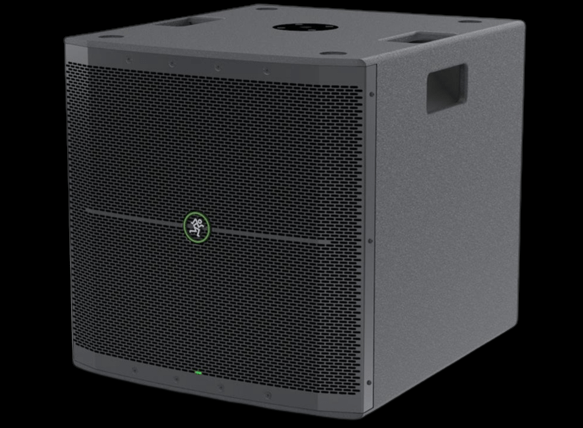
| Power | 1400W |
| Driver Size | 18″ |
| Frequency Response | 30Hz-150Hz |
| Max SPL | 132 dB |
| Inputs | 2 x XLR |
| Outputs | 2 x XLR (high pass), 2 x XLR (low pass) |
| Dimensions (W/H/D) | 20.9″ – 21.3″ – 23.8″ (531mm – 541mm – 605mm) |
| Weight | 66.5 lbs. (30.2 kg) |
Pros
- Powerful Output: With a 1400W amplifier, it ensures a commanding presence in various settings.
- Versatility: Adapted to a range of scenarios, including live gigs and studio configurations.
- Dual XLR Inputs: Provides compatibility with various audio sources, enhancing its flexibility in setups.
- Built-in Crossover: Simplifies the audio setup process and enhances sound quality by directing frequencies effectively.
- Robust Construction: With a reputation rooted in durability, this subwoofer stands firm against the rigors of consistent use.
- Ported Design: Ensures efficient air movement, delivering a more resonant bass response.
- Affordability: Offers an outstanding balance between price and performance, providing value to its users.
Cons
- Bulkiness: Its design, while durable, might not be the most space-efficient or easy to transport.
- Sound Definition: At highly high volumes, there might be a slight compromise in sound clarity.
- Cooling Mechanism: Some users might find its cooling system noisy during silent moments.
- Simplistic Controls: Might not offer the intricate customization that sound professionals seek in advanced models.
- Limited Advanced Features: Compared to high-end models, it may lack some more sophisticated functionalities.
Navigating through the expansive realm of subwoofers, Mackie’s Thump series emerges as a beacon for enthusiasts who desire top-tier performance without delving deep into their pockets. Oriented towards those just embarking on their sonic journey, the Thump118S, an 18-inch powered subwoofer, stands as a testament to Mackie’s prowess in delivering exceptional value. Boasting a formidable output, this subwoofer doesn’t shy away, showcasing an impressive 132 dB Max SPL.
The artistry of this subwoofer for DJing becomes palpable when one encounters its low-frequency outputs. They aren’t just sounds; they’re symphonies of crisp, defined notes that possess the innate ability to make bass fans’ hearts race with their resonating thumps and deep rumbles. And when one integrates main PA speakers from the illustrious Mackie Thump lineage, the result is an unbeatable sonic ensemble, which is both budget-friendly and power-packed, setting a new benchmark in the subwoofer panorama.
How to Buy the Best Subwoofer: Complete Guide
With increasing performance experience, you’ll recognize the indispensable role subwoofers play, particularly when entertaining larger audiences or aiming to deliver a profound, bass-rich auditory journey.
The difficulty arises in determining which subwoofer deserves your attention and which doesn’t. Your criteria will vary depending on your event’s needs. Thus, it’s crucial to reflect on your intended use of subwoofers as you review these considerations and the subsequent choices presented.
Powered vs. Passive Subwoofers
Powered subwoofers come equipped with an internal amplifier, making them an ideal choice when seeking a straightforward setup. Typically, they fit seamlessly into simpler PA systems that comprise one or two loudspeakers coupled with a subwoofer. The inherent amplifier is custom-designed to complement that specific subwoofer, ensuring optimized performance.
On the other hand, passive subwoofers lack this built-in amplifier. Consequently, they necessitate an external amplifier to power them. While this configuration might seem intricate initially, it provides users with enhanced adaptability in system configurations. It’s especially apt for those keen on setting up more expansive systems, as it offers an elevated degree of control and adjustability.
Built Robustness
Subwoofers crafted from molded plastic or plywood may have minor sound compromises but exhibit enhanced durability over MDF counterparts. They resist the rigors of occasional bumps or unintended falls quite effectively. Examine various finishes and protective coatings, as they provide an extra shield against potential damages. If you’ve chosen an MDF-based subwoofer, such protective measures become more crucial to ensure longevity.
Consider the frequency with which you’ll transport or reposition your sub. Permanent installations require less concern about resilience. However, if you’re someone who frequently shifts your setup, opting for a sturdier framework becomes essential, given the increased risk of mishaps during transit.
Size
Indeed, larger subwoofers and expansive cabinet dimensions often translate to enhanced durability and a more powerful sound output. However, the trade-off is the increased weight, making them significantly more challenging to transport. Beginners might find it beneficial to start with something relatively compact and easier to handle. Meanwhile, those targeting vast audiences might opt for more substantial cabinets, provided they’re equipped to handle the physical demands.
Power Output
Many individuals tend to zero in on the maximum power output when assessing subwoofers. Manufacturers, aware of this inclination, highlight these numbers to capture attention. However, for those genuinely pursuing top-notch powered subwoofers, the focal point should be the RMS (Root Mean Square) or continuous power output.
Typically, the RMS value is around half of the maximum output, indicating the level at which you can sustainably drive your speakers without compromising sound clarity due to distortion. To put it in perspective, subwoofers boasting an RMS wattage in the 500 to 700 range are aptly suited to standard gigs and venues.
Final Thoughts
The world of powered subwoofers offers many choices tailored to various needs and preferences. It’s vital to invest time in exploring the sub-options highlighted and to weigh them against your financial constraints and specific requirements. Ensure that you find the perfect balance between budget and functionality that aligns seamlessly with your expectations.

